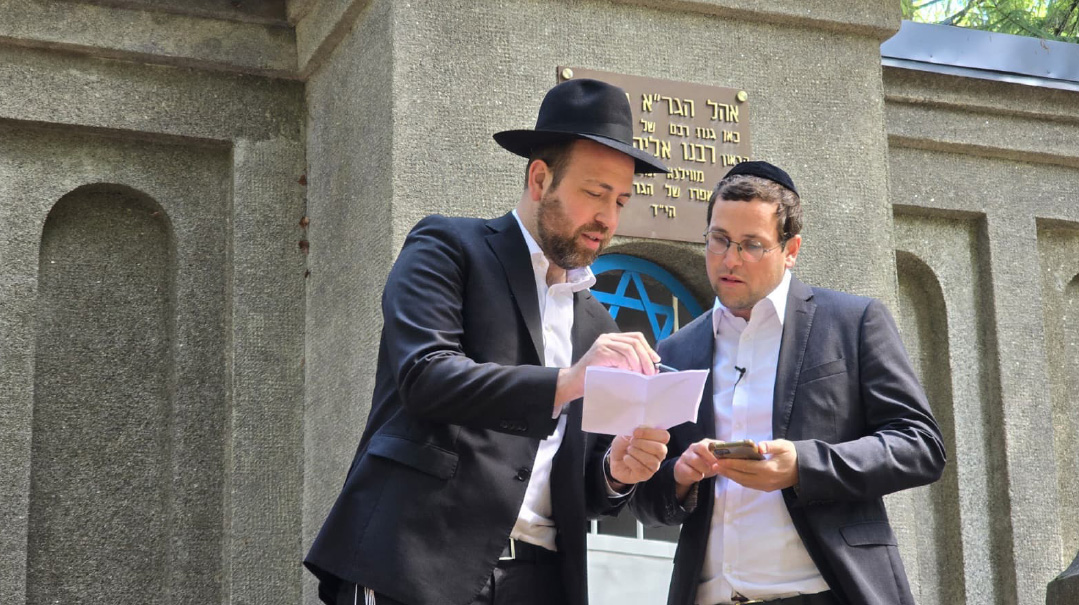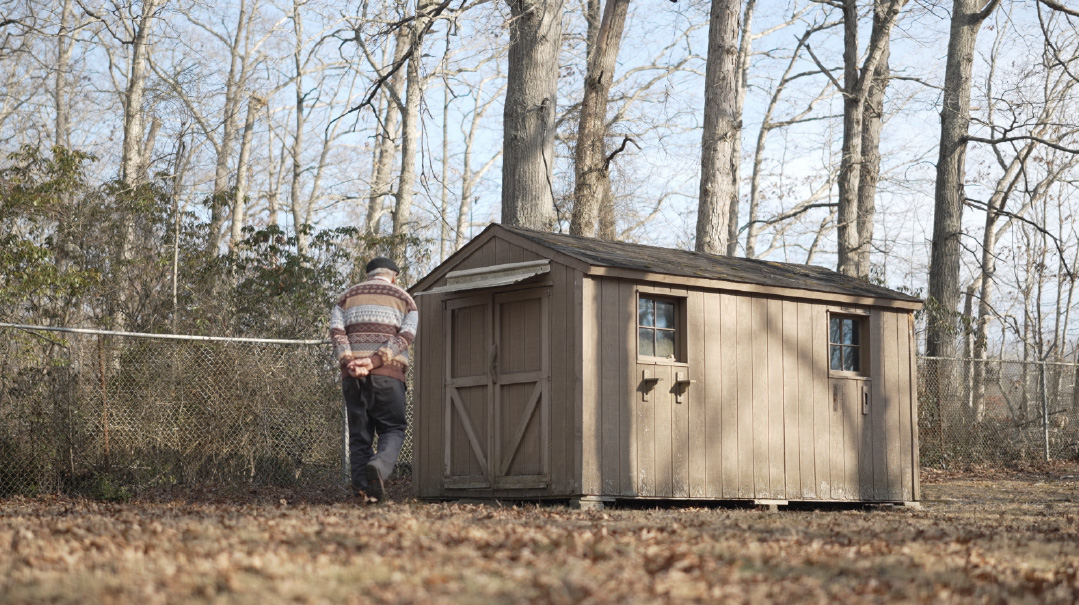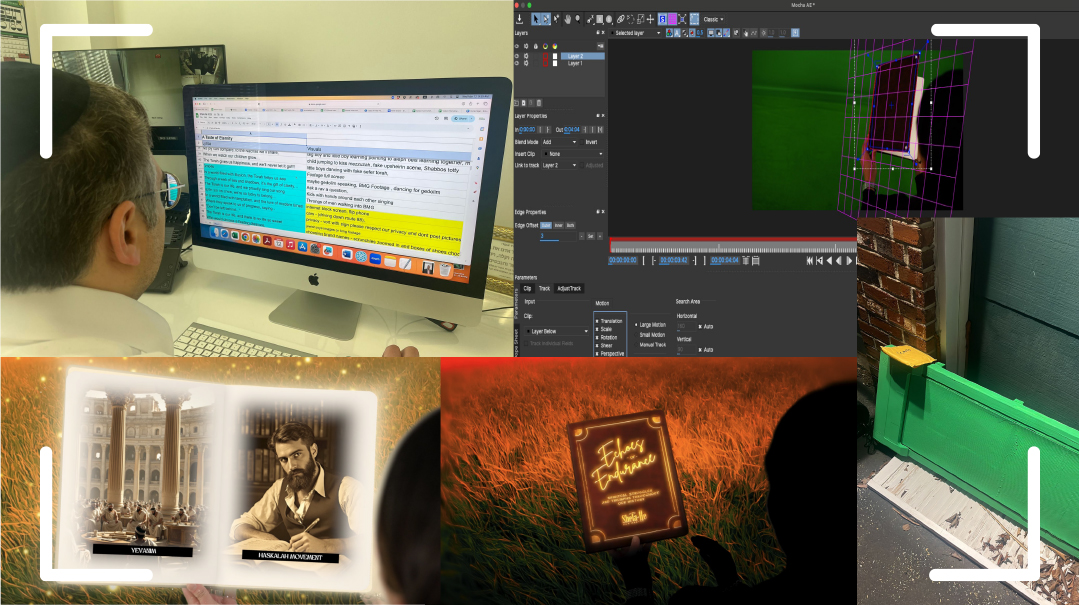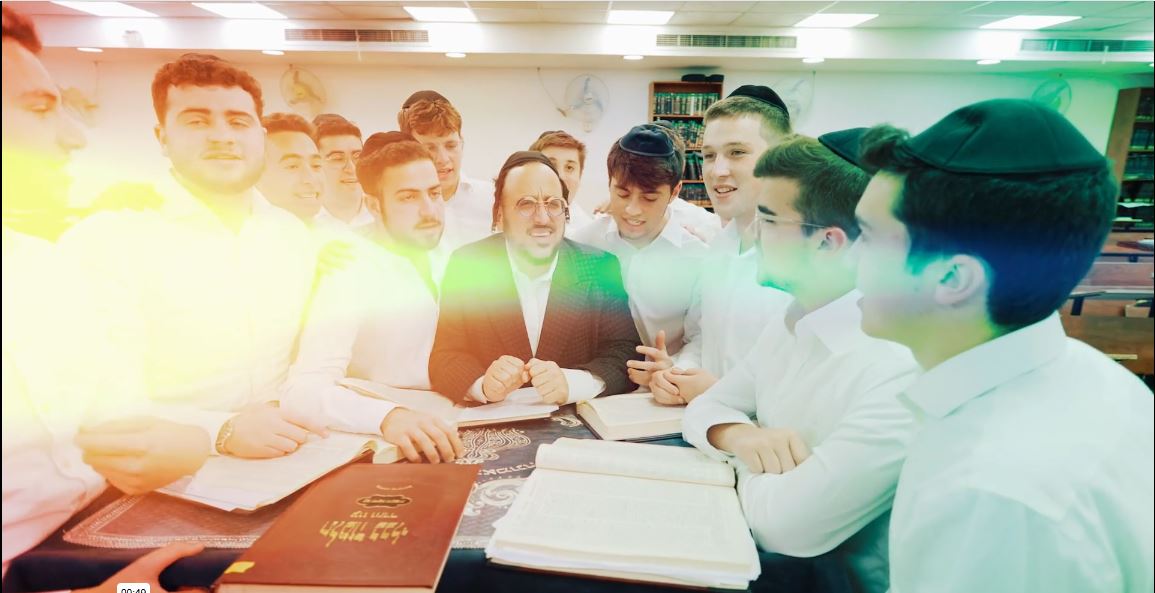Client: Yeshiva Nishmas Hatorah (Inwood, New York)
| January 9, 2024“We want it to be something the bochurim themselves will be excited to share, not a classic yeshivah dinner video”

Client: Yeshiva Nishmas Hatorah (Inwood, New York)
Objective: Create a music video for their building campaign
Film Locations: Toms River, New Jersey, and Inwood, New York
Project Deadline: January 2024
The Proposal
The bochurim at Yeshiva Nishmas Hatorah have always prided themselves on having a little more personality than the average yeshivah bochur, and we’ve tried to reflect that spirit in the productions we’ve done for them. Now Nishmas Hatorah needed to raise funds to finish their new building, and they hired the firm Consult Write to run their marketing.
“This video has to be something really out of the box,” explained Consult Write’s CEO Chayale Kaufman. “We want it to be something the bochurim themselves will be excited to share, not a classic yeshivah dinner video.”
We tossed around a few ideas. Yeshivah footage music video? Too boring. A rap about the campaign? Different, but too “out there.”
“We can’t lose sight of the fact that it’s a yeshivah,” Senior Production Manager Moshe Niehaus cautioned.
Then Esti Neustadt, Consult Write’s chief strategist, had the perfect inspiration.
“What about Binyomin Miller?” she suggested. “You know, the yeshivah guy who does those hilarious music videos? He was Skinny Pinny for the lose4autism campaign, he did that aveirah song that went viral.” We were all smiling and nodding as she continued, “I think he can produce a video with personality that still fits in the yeshivish framework.”
“That’s unbelievable!” Mrs. Kaufman enthused. “That perfect mix of exciting and different, the bochurim will love sharing it.”
“One thing,” Moshe Niehaus advised, “We can’t just produce a random parody song and call it a day. The song has to have a strong fundraising message — embedded in the humorous lyrics, of course — but it has to have that message to really accomplish the main goal: helping the building campaign get to completion.”
With that in mind, we agreed to pursue this idea.
Pre-Production
Binyomin Miller brainstormed with some of us to come up with a song that meshes with the campaign.
“The whole idea is that the building is only halfway done,” Binyomin pointed out. “Let me see if I can write a song about things that are incomplete — a chair without a seat, a centipede with no feet, pants without a pleat, things like that, and bring it back to how the building is only halfway up.”
This concept had the messaging — and the potential for great humor.
“But what about your character?” Moshe asked.
In his previous productions, Binyomin had completely immersed himself in the songs, getting into both costume and character to drive home the hilarity of his lyrics.
“We want you to be entertaining, but we can’t lose sight of the fact that we’re representing a yeshivah here. It can’t get too silly.”
“I can do subtle,” Binyomin assured us. “What about using a slower, more moving tune, and then really overdoing the emotional aspect? I’m talking mournful expressions, kvetching on the vocals, the whole nine yards.” His voice picked up speed as he warmed to the idea. “I would love to ‘overproduce’ the whole production, poking fun at the Jewish music industry’s penchant for going heavy on the theatrics, the singing on the beach and the in-studio smoke and fog machines.”
Great idea! Ironic, self-deprecating humor would give the production a classier feel, more befitting a yeshivah than a slapstick style.
Once the concept was worked out, Binyomin started compiling dozens of examples of “incomplete” things, which he wrote into lyrics, as well as the tune he would sing them to. He titled the song “Incomplet.”
Once he recorded the song, we were ready to start planning the shoot.
Location, Location, Location
We wanted footage of Binyomin singing in the studio, at the beach, and in a private home where he would be holding a baby (“I’m feeling so forlorn/like a baby that was never born”), and a few other props that needed to be worked into the video. The main set would be the unfinished yeshivah building itself, which would bring the whole concept together by actually showing the incompleteness Binyomin was singing about — but shooting in a construction zone does bring its fair share of challenges. We had been promised there would be working outlets, and there was… one. In a remote corner of the building. Fortunately, we come prepared, and one of our cinematographers had an extension cord practically the length of the building in one of his many equipment bags. We had to plug everything into that one cord, but apparently LED equipment is pretty light, and it didn’t blow the fuse. Crisis one averted.
A key line in the song is when Binyomin croons, “Hillel was covered in snow on his whole guf/ but not on our building, ’cuz we don’t have a roof.” The building was still very much in middle of construction, and the roof wasn’t completed — at least not until the day we showed up. Apparently, the workers had finally gotten to closing it off. Nothing like wanting something delayed to get it done, I guess. But now what?
Moshe Niehaus spotted the scaffolding just outside the building.
“I bet if you stand on the frame and look up, the wooden slats can look like the unfinished roof you’re singing about,” he pointed out to Binyomin.
How’s that for a little out-of-the-box thinking for an out-of-the-box production? Our cinematographer also had to get a bit adventurous himself; to capture Binyomin staring out a second-floor window from the right angle, he climbed on top of the electrician’s van.
Cool, Chilled, and (Teeth) Chattering
As you can imagine, filming on a construction site in mid-December is chilly (temperatures hovered in the mid-thirties!). The crew was dressed warmly in hats in hoodies, but our star Binyomin had to stay in character, in the classic dressy suit and black tie. He looked great, but by the end of the day, he had a hard time feeling his extremities.
And then it was time to go to the beach. Binyomin’s character allowed for a scarf to be fashionably tossed around his neck, but other than that he was pretty much in the cold. Did I mention it was also really windy on the boardwalk — so windy that our cinematographer actually lost his yarmulke in the blustery conditions? (Spoiler alert: The yarmulke blowing away was caught on tape and actually made it into the final video.)
In a nice twist, the last stop on the shoot was a house, where we’d film Binyomin with a baby. Our cinematographer sheepishly asked the hostess if she might have a spare yarmulke for him.
“Well, the baby you’re holding is a girl,” she said with a smile, “but she has only brothers, five to be exact. We buy yarmulkes in bulk around here — there’s a box in the corner — help yourself!”
Punchlines
Associate VFX Director Jeremy Lewis took the lead for postproduction project editing. He was making real headway when he stopped by my office with a concern.
“Moshe, the idea of the video is to be ironic, right? Making light of the overproduced music videos in the business?” he asked. “The problem is it may be too subtle, because the set looks great! Viewers may not spot the joke right away.”
“Hmm, that is an issue,” I said. “Why don’t you play around with the structuring?”
Jeremy came back later with the perfect solution.
“I had the video start with Binyomin on the boardwalk, scarf softly billowing in the breeze as he gazes into the middle distance, really giving that cheesy overdone feel. Then, to make sure everyone knows not to take it seriously, I showed the wide shot, with the battery-operated leaf-blower that’s making the scarf blow clearly visible in the scene.”
Leading with that shot instead of burying it in the video sets the tone from the get-go, ensuring viewers are in on the joke right away.
Jeremy used a similar trick later, where the lyrics call for “tears… in the Rosh Yeshivah’s eyes.” Binyomin sings this very overly emotionally, but to double down on the humor, Jeremy started the shot not from the tears dripping down the Rosh Yeshivah’s face, but from a few frames earlier, when he was using an eyedropper to apply them.
Callback
Binyomin wanted the vocals to match the whole style of the video, with that overproduced, trying-too-hard vibe. The plan was to have the track end with a long stylized vocal, dragging out the last notes in homage to that Jewish song that never ends. But after singing for a while, Binyomin was a little out of breath, and he was having trouble holding the note for those extra seconds.
The track was recorded and filmed in singer Simcha Leiner’s studio, and DJ Shua Sorscher, who was producing the track, told Binyomin not to sweat it.
“We can always stitch together two takes to make the note long enough,” he said.
Well. Now the gauntlet was thrown — and Binyomin was determined to show he really had it in him. He took a deep breath, and then he let the note drag for a jaw-dropping 25 seconds. Binyomin was laughing when he finished, having gone way over the top just to show he could, but Shua looked thoughtful.
“Why not use that one in the final track? You can have the set being taken apart behind you as you hold that note.”
What a great idea, where the obvious jokes in the beginning and end of the video bookend the more subtle humor, tying it all together.
It would be The (clichéd, overdone) Perfect Ending.
(Originally featured in Mishpacha, Issue 994)
Oops! We could not locate your form.







